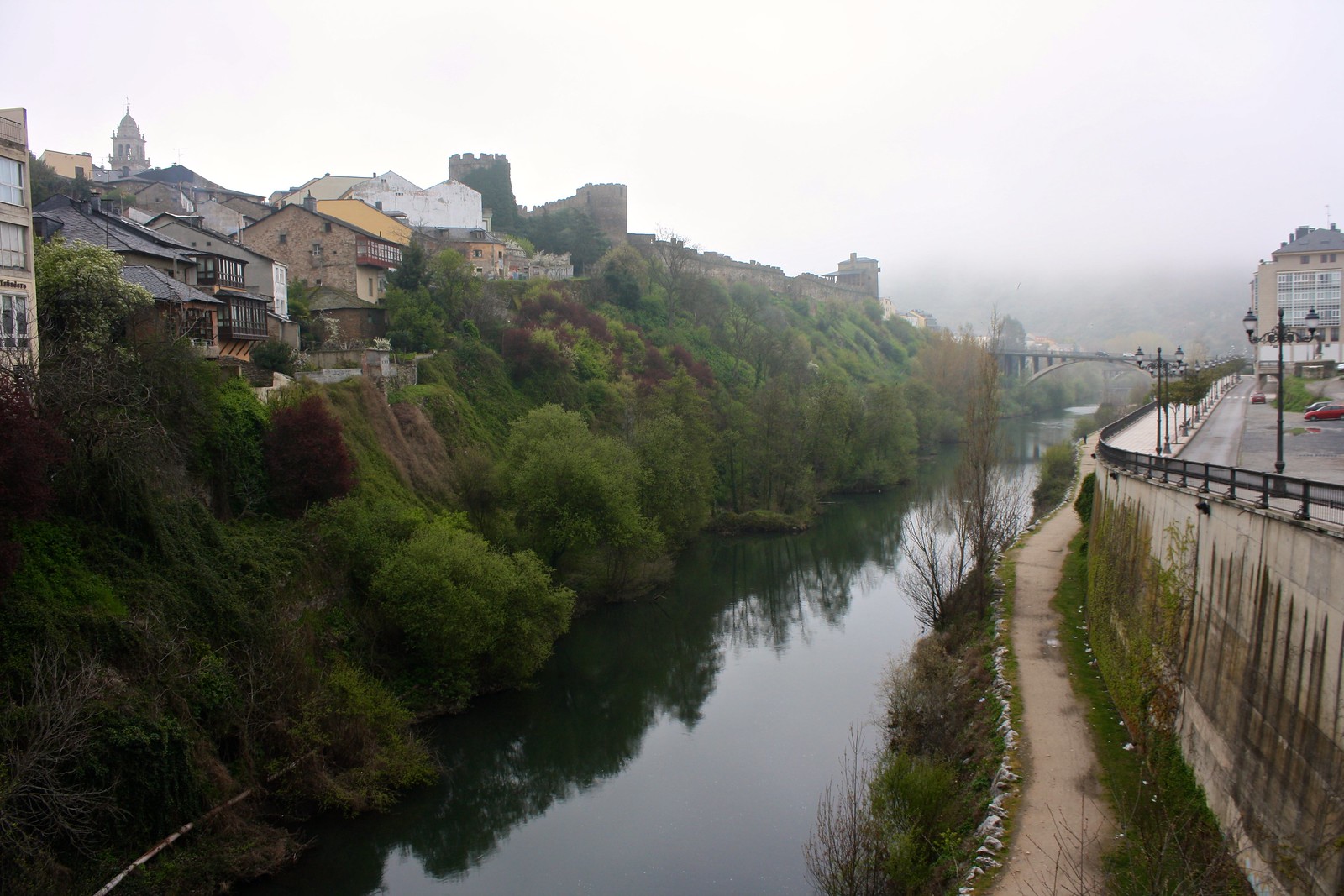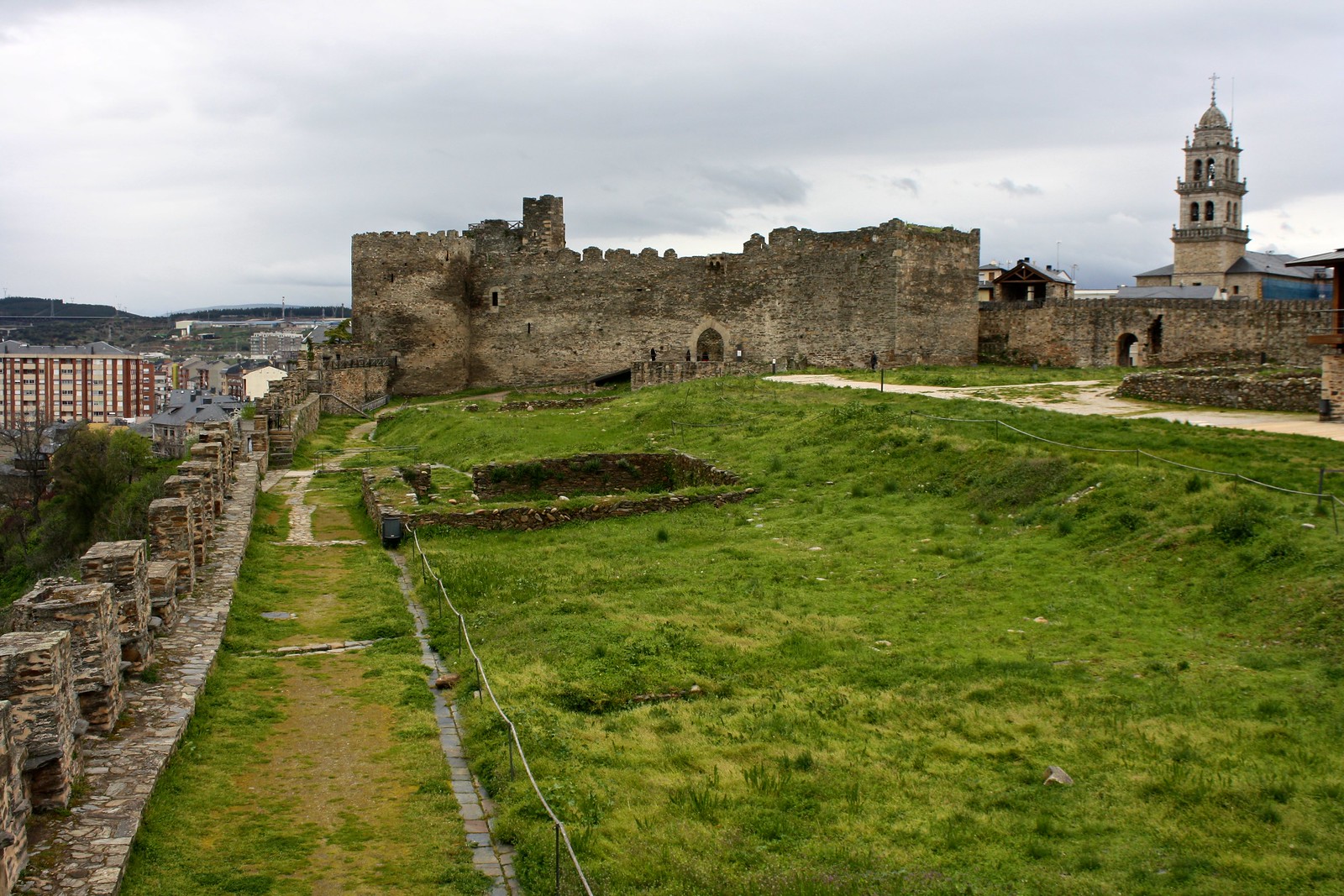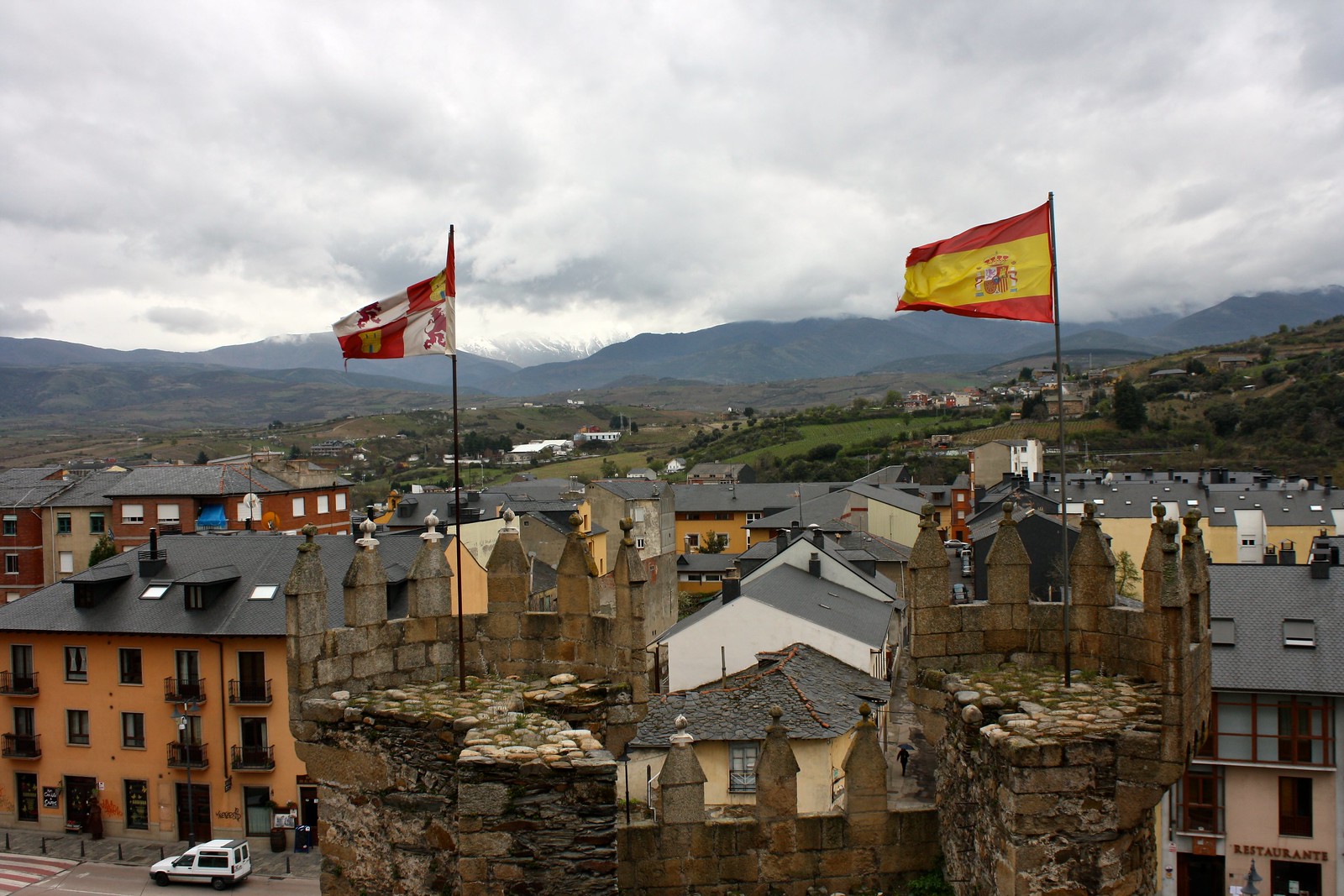Photo Post: Pinchos & Castles in Ponferrada, Spain
 |
| Entrance |
Tucked away in a mountainous corner of northwestern Spain lies the tiny sub-region of El Bierzo. Pronounced “bee-AIR-thoe” [ˈbjer.θo], this cultural area takes up the western third of the province of León and is a “mini-Galicia” amidst the dominant northern Castilian region. Unique meats like cecina (cured beef) and botillo (chunky sausage) are popular here, the French Way of the Camino de Santiago passes through here, many folks speak the Galician language, and everything is generally greener (and rainier, too).
 |
| The Sil River |
Ponferrada is the principal city in El Bierzo, a bustling, 70,000-strong town in a sea of sleepy mountain villages. On my way back from León in March, I came here to visit my friend Laura who I met while working down south two years ago; she was one of the many auxiliares that the bigger city of Linares was home to, and we both got placed in the northwestern part of the country this past school year.
 |
| The castle grounds |
I was completely caught off guard by Ponferrada’s vibrant culture of free tapas, or as they call them there, pinchos. As in León or Galicia, whenever you order something to drink at a bar-restaurant-café, you’ll usually get a little plate of something to nibble on, and Ponferrada was no different. Places also had huge menus or sprawling displays where you could select your free
 |
| Pointy arch |
Ponferrada’s major monument is its Castillo Templario or Knights Templar Castle. Built between the 1100s and 1300s, this imposing fortress commands the confluence of the Sil and Boeza rivers and makes Ponferrada’s small old town feel even tinier. The whole castle has been recently restored with some exhibit rooms and a reconstructed main hall and patio, but most of the castle grounds feels simply old—you can stroll across a weathered field from one rugged rocky wall to the other, crawl through lonely arches and find ivy-covered towers, and stare out across the ramparts at the traditional slate-covered roofs.
The castle’s main entrance, to me, felt very typically “castle-y,” with a moat, arched gateway, and pairs of round defensive towers topped with pointy crenellation. All those years making castles from LEGO bricks and playsets and I finally got to experience a LEGO-style castle.
 |
| Mountains of El Bierzo in the distance |
What was your favorite photo from this post? Does Ponferrada’s castle fit your image of an “ideal castle”? Tell me your thoughts below in the comments!
